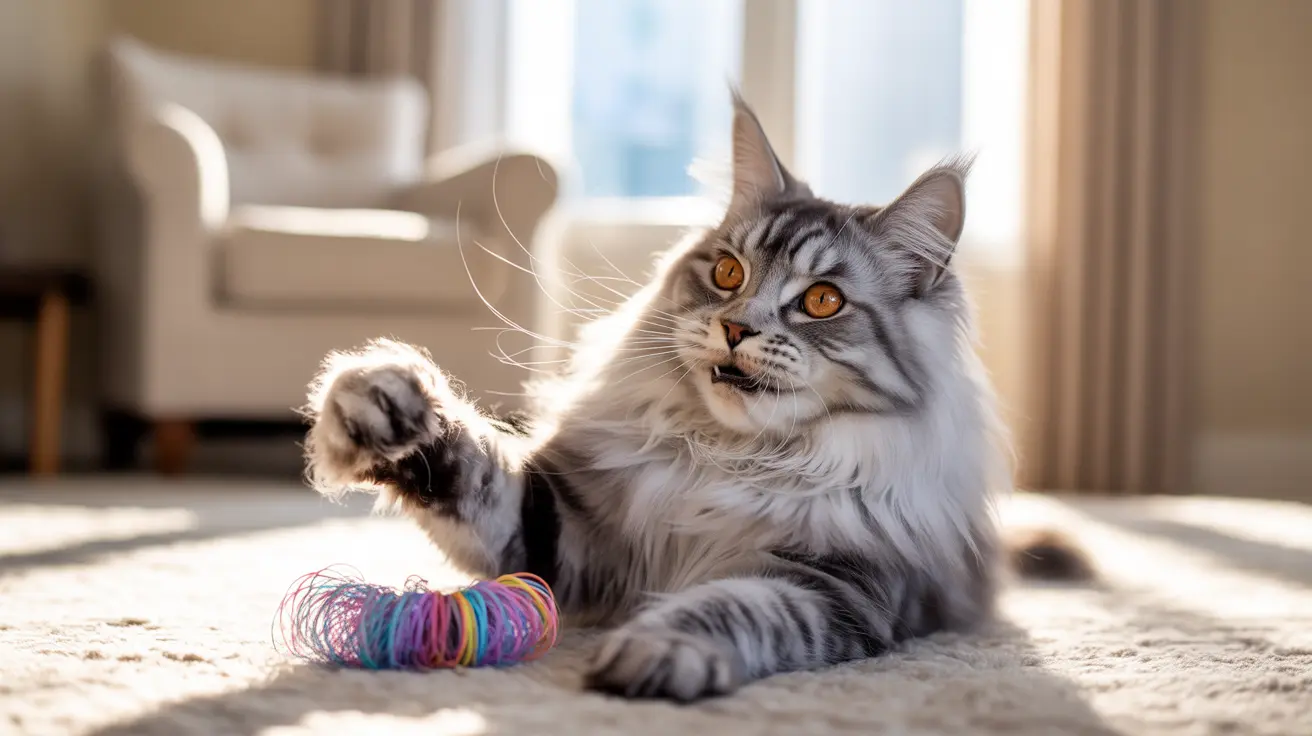Understanding Why Cats Eat Hair Ties
Cats are naturally drawn to hair ties due to their springy texture and movement that mimics prey. The elastic nature of these objects triggers a cat's hunting instincts, making them irresistible playthings. However, this seemingly innocent play can lead to accidental ingestion, especially during vigorous play sessions.
Some cats develop a particular fascination with hair ties, treating them as preferred toys and actively seeking them out. This behavior can be particularly dangerous as it increases the risk of repeated ingestion over time.
Immediate Dangers and Health Risks
When a cat swallows a hair tie, several serious complications can occur:
- Choking or airway obstruction
- Esophageal blockage
- Gastric or intestinal obstruction
- Internal lacerations if the hair tie breaks
- Potential peritonitis from intestinal perforation
The elastic nature of hair ties makes them particularly dangerous, as they can stretch and become entangled in the digestive tract, potentially causing severe damage to internal organs.
Warning Signs to Watch For
If your cat has ingested a hair tie, watch for these critical symptoms:
- Repeated vomiting or dry heaving
- Loss of appetite
- Lethargy or unusual hiding behavior
- Straining to defecate
- Visible abdominal pain or bloating
- Drooling or gagging
Emergency Response and Treatment
If you witness or suspect your cat has eaten a hair tie, take these immediate steps:
- Check for breathing difficulties
- Contact your veterinarian immediately
- Monitor your cat closely for symptoms
- Never attempt to remove the hair tie yourself
Your veterinarian may recommend diagnostic tests such as X-rays or ultrasounds to locate the hair tie and determine the best course of treatment. In many cases, surgical removal may be necessary to prevent life-threatening complications.
Prevention Strategies
Preventing hair tie ingestion is crucial for your cat's safety:
- Store hair ties in secure, closed containers
- Keep bathroom and bedroom doors closed
- Provide appropriate cat toys as alternatives
- Regular household inspection for stray hair ties
- Consider using wall-mounted holders for hair accessories
Frequently Asked Questions
What are the symptoms that indicate my cat ate a hair tie and needs urgent vet care?
Urgent symptoms include difficulty breathing, repeated vomiting, lethargy, loss of appetite, and visible abdominal pain. If you notice any of these signs, seek immediate veterinary attention.
How long does it typically take for a cat to pass a swallowed hair tie safely?
If a hair tie will pass naturally, it typically occurs within 12-24 hours. However, waiting to see if it passes can be dangerous - consult your vet immediately if you know your cat has swallowed a hair tie.
What should I do immediately if my cat chokes or gags after eating a hair tie?
If your cat is choking or gagging, seek emergency veterinary care immediately. Do not attempt to remove the hair tie yourself, as this could cause additional injury.
Can playing with hair ties cause serious health risks for my cat?
Yes, playing with hair ties poses significant health risks, including choking, intestinal blockage, and potential internal damage that may require surgery.
How can I prevent my cat from eating or playing with hair ties to avoid potential harm?
Store hair ties securely out of reach, provide appropriate cat toys, maintain regular environmental enrichment, and consider using designated storage solutions like closed containers or wall-mounted holders.
Conclusion
While hair ties might seem harmless, they can pose serious health risks to cats. Being vigilant about storage, providing appropriate toys, and knowing the warning signs of ingestion can help keep your cat safe. If you suspect your cat has eaten a hair tie, don't wait - contact your veterinarian immediately for professional guidance and care.






